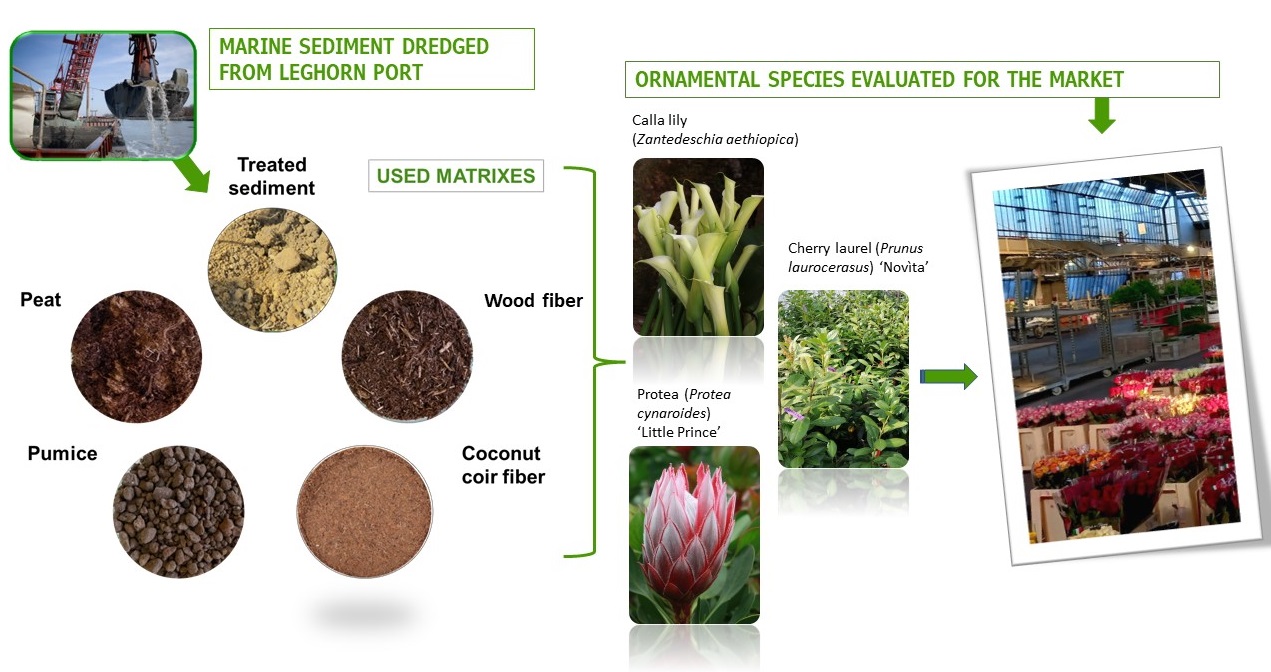Treated sediment as substrate component of three containerized ornamental species: effects on marketable and qualitative traits

Published 2023-01-18
Keywords
- Calla lily,
- cherry laurel,
- growing media,
- protea,
- sustainability
How to Cite
Copyright (c) 2023 Stefania Nin, Maria Castellani, Daniele Bonetti, Maurizio Antonetti, Domenico Prisa, Gianluca Burchi

This work is licensed under a Creative Commons Attribution 4.0 International License.
Funding data
-
European Commission
Grant numbers LIFE 17 ENV/IT000347
Abstract
Carried out within the LIFE17ENV/IT/000347-SUBSED project, this research aimed at investigating the effect of a treated sediment (TS) as substrate component on the quality and marketability of three widespread containerized ornamental species: cherry laurel (Prunus laurocerasus) cv. Novìta, calla lily (Zantedeschia aethiopica) and protea (Protea cynaroides) cv. Little Prince. The TS was mixed with soilless substrates as sphagnum peat, coir, and bark in different proportion (0%, 25% and 50%). In cherry laurel, the TS used in 25 - 50% proportions reduced plant height, slightly altering its attractive vibrant foliage. A positive effect of the TS was evidenced on calla lily, where both tested sediment-based mixtures allowed a copious blooming and flower quality raised as the sediment content increased (TS 50% > TS 25% > TS 0%). Post-harvest longevity and colour of flowers were not affected by substrate composition. The effect of sediment-based substrates on protea growth and blooming showed an opposite trend (TS 0% > TS 25% > TS 50%), with plants grown on 50% v/v TS exhibiting a considerable reduction in plant growth and production of flower clusters, with brighter tones turning towards purple. Based on sale values, the TS proved to be a sustainable alternative for the production of potted ornamentals if properly mixed with other organic matrixes, such as peat and coir.




